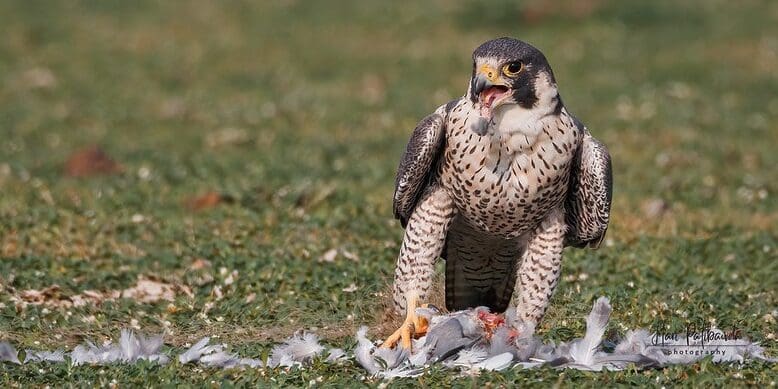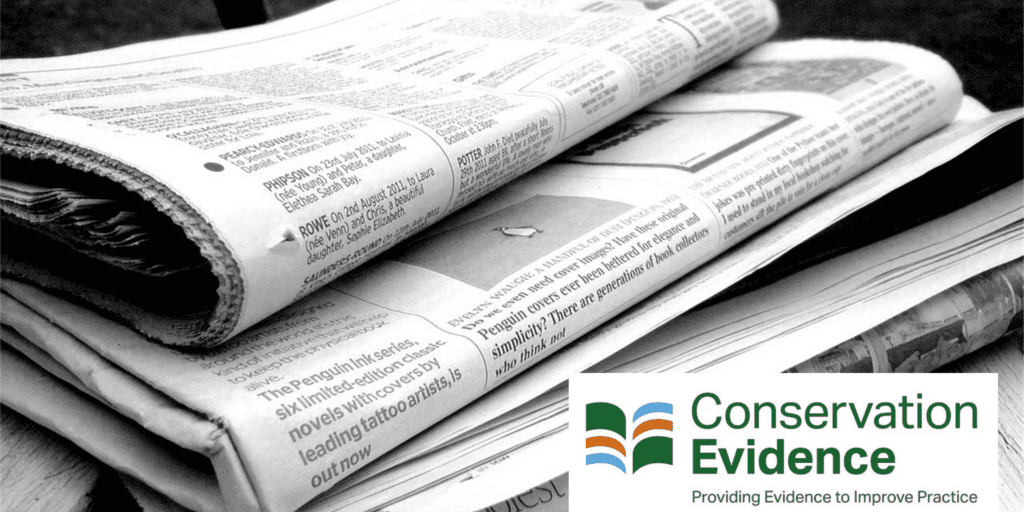Conservation Optimism Summit: empowering evidence use for a brighter future for nature
This blog post was written by Dr Alec Christie, Henslow Research Fellow, Downing College, University of Cambridge, Dr Vanessa Cutts, Research Associate with Conservation Evidence, University of Cambridge, UK, and Ashley Simkins, PhD Student, Department of Zoology, University of Cambridge.

The Conservation Optimism Summit
Conservation Optimism is a global movement dedicated to inspiring individuals to make a positive change for nature. With constant exposure to negative news, it’s so easy to get bogged down by the state of the planet. By highlighting solutions rather than problems, the Conservation Optimism community are dedicated to reminding us that hope exists, and that change is possible. The community has been building since 2017, and in September 2024, members of the Conservation Evidence team participated in the third Conservation Optimism summit in Oxford, UK. The event featured a wide range of activities, from wellbeing sessions to interactive workshops, such as communicating conservation through art (‘artivism’), as well as inspiring talks from boots-on-the-ground conservationists, such as Simson Uri-Khob, the CEO of Save the Rhino Trust Namibia. One of these workshops was run by the Conservation Evidence team on how we can use evidence to save nature.
How can we use evidence to save nature? A Conservation Evidence workshop
Our 2-hour workshop had a great turnout from over 20 participants. We began with a brief introduction, led by Vanessa, to the concept of the evidence crisis in conservation and how the Conservation Evidence project is trying to tackle it. This included a short walkthrough of the website and some tips on how to get the most out of it.

Alec then introduced the core activity of the workshop: a team task. The first step was to create a simple theory of change for one of four conservation scenarios on a flipchart. For example, one scenario was “A renewable energy company wants to know how they can reduce the mortality rate of bats from onshore wind turbines at their sites across Europe.” Teams of 5-6 people worked on their theories of change and identified the key assumptions underpinning them (e.g. increasing the wind speed at which turbines are turned on will reduce bat mortality).
Teams then appended evidence to their theory of change using sticky notes so that they could assess the validity of their key assumptions. To find evidence, we encouraged teams to use the Conservation Evidence website, plus many other evidence repositories and sources. Teams were briefed to consider a broad definition of evidence: from local knowledge and practitioner experience to scientific and grey literature (both primary and secondary studies, reports, syntheses, guidance documents etc.).
On the sticky notes representing pieces of evidence, we asked teams to include the evidence source and a summary of its findings, as well as whether the evidence supported or refuted the assumption being considered. Teams were also asked to consider how reliable and relevant the evidence was likely to be (i.e. how much weight should the different pieces of evidence be given?).
Finally, teams had to pull their work together and come up with an evidence-based recommendation to respond to their conservation scenario. Each team presented their recommendations back to the wider group, pitching to ‘funder’ Professor Julia Jones, and answering questions about the evidence used and how they assessed it.
Our reflections
We were impressed by how much the participants were able to do in such a short space of time. All four groups used the Conservation Evidence database to reach a recommendation for their given scenario. They found that it gave a good overview of the possible actions, even in cases where literature might be outdated. They also conduced general web searches, though it was noted that information found this way was often not backed up by credible sources. One group mentioned that they would have used an Indigenous knowledge database but could not find such a resource.
Groups came to their final recommendations in different ways: some laid out all possible actions on sticky notes and then narrowed them down based on the strength of evidence or their relevance, while others carefully considered and scrutinized each action and its associated outcome before solidifying it with a sticky note (see slideshow above). In situations where there was not enough evidence, some groups provided suggestions for generating evidence as part of their recommendations, for example one group suggested a citizen science project to understand the effects of manual removal of the invasive aquatic plant, parrot’s feather Myriophyllum aquaticum.

Insights from a survey: How do conservationists use evidence?
During the session, we conducted a short survey aimed at anyone working, studying or interested in nature conservation. The aim was to understand what people currently base conservation action decisions on, and to gather feedback about the use of Conservation Evidence. Ash also chaired a brief discussion reflecting on how easy the exercise was to do, and the participants broader thoughts and experience of using Conservation Evidence.
The 16 participants that completed the survey represent a variety of backgrounds (including academics, non-governmental organizations, government, business, zoos and botanic gardens) and career stages (mostly middle or senior career roles, but also some junior).
The majority of participants based their decisions on experience including academic research (86%) or online information (71%). Following the workshop, all partners will consider evidence in decision making in the future.
Although most participants had not used Conservation Evidence previously (56%) or rarely use it (19%), many had heard of it (63%). This related to being unaware of the tool, they have not got around to using it, or they do not work in a role where they make conservation decisions. Crucially, all participants said they would explore the use of Conservation Evidence going forwards. Those that had used it noted significant advances over time in the information summarized and its accessibility.
The participants broadly found the website easy to navigate and use, and all plan to use it going forwards where appropriate (in their role). Some suggested slight modifications to the search and filter options, including linking to similar actions for other taxa and ways to group similar actions together. Some participants were also keen to contribute towards the evidence base, which is great to hear!
Plans for improving Conservation Evidence
There are several areas of work underway to improve the useability and accessibility of the Conservation Evidence website, related to the insights we gained from the workshop. For example, with colleagues in the Department of Computing Science, we are developing an intelligent AI-assisted search function to improve the ease at which people can find relevant evidence on the website. Further down the road we are planning to create a Conservation Evidence chatbot to answer questions drawing on the summarized evidence found on the website.
The Conservation Evidence team is also working on new methods to score the effectiveness of interventions based on individual studies, which will enable more customized evidence-based recommendations to be provided depending on the end user’s local context and questions – such as where they are in the world and the species and habitats they are interested in.
The Conservation Evidence team is also in the early stages of developing a method and database to collate and disseminate practitioner experience and Indigenous knowledge. This is key for enhancing the effectiveness of conservation but, currently, this information can be hard to come by and difficult to share in ethical and representative ways.
Finally, we are also planning more resources such as: videos and guides on how to use the Conservation Evidence website effectively; general advice on how to use and embed evidence in the workflows, strategies, plans, and practice of conservation organizations; advice on how to contribute to the evidence base, such as through publishing in the Conservation Evidence Journal. We plan to provide more workshops at events like the Conservation Optimism Summit, and offer webinars and bespoke training sessions to organizations that are interested in using evidence more to improve practice. If you are interested, please get in touch with us via email.









Love reading all the new updates! Thank you guys.